|
| |
Back to transports
|
Argentina |
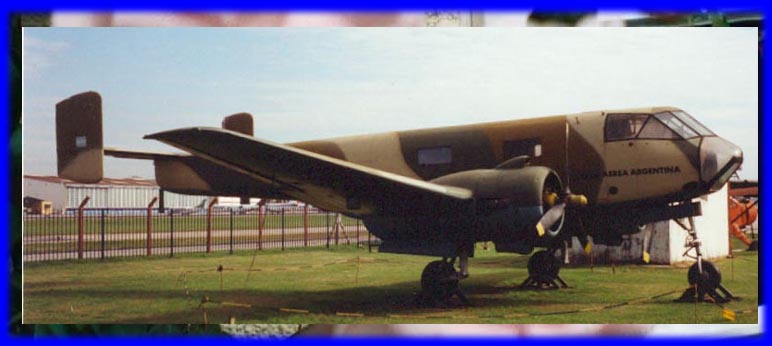 |
|
The FMA IA35 Huanquero (you have to be careful how
you pronounce it) was a light troop transport produced in the 1950s
by Fabrica Militar de Aviones, the Argentine air force's
in-house aircraft manufacturer. It was a simple and rugged machine
powered by two radial engines. It was superseded in practice by the Guarani (in the
light transports section).
This one is preserved in the Argentine Air
Force museum at Buenos Aires, where it was seen in 1999. |
| Canada |
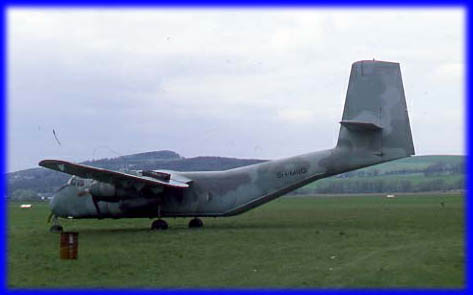 |
|
The De Havilland Canada DHC4 Caribou was a
very tough, short take-off & landing transport, capable of operating
in the most hostile conditions. It was designed to get in and out of
frozen, semi-prepared airstrips in the bleak North of Canada. It
first flew in 1958. Its two large radial engines give it a load capability
of 3 tons, or 32 troops plus equipment. It serves in the Canadian
forces, where it is known as the CC-108, and the US Army as the C-7.
Note particularly the bent wings, designed to be lowest at the
engines so as to minimise the length of the undercarriage.
This Kenyan registered example was at Shoreham in
April 1980. |
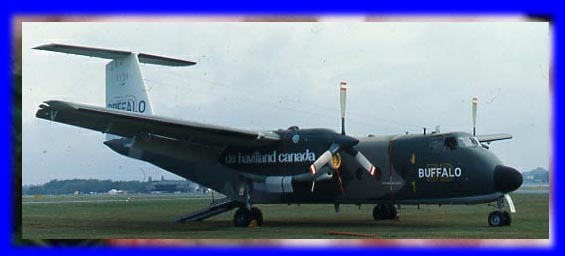 |
The De Havilland Canada DHC5 Buffalo is
essentially a turboprop version of the Caribou, but with some other
aerodynamic refinements such as a T-tail and straight wings. The
new engines increase load to 41 troops but the higher fuel
consumption reduces its range from 1,300 to 700 miles, albeit at a
higher speed of 260mph. The Canadian forces use it as the CC-115,
and the US Army call it the C-8. This
demonstrator was at Farnborough in the late 1970s. |
| France |
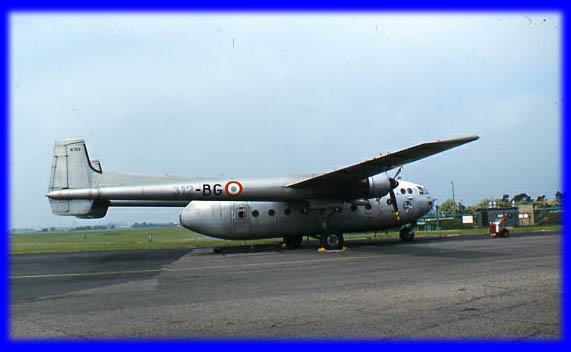 |
|
The Nord Noratlas was built from the early
1950s by SNCAN (Societe Nationale pour le Construction Aeronautiques
du Nord). It was used by the French and German air forces. Surplus
aircraft were then used by other air forces, but surprisingly few by
commercial operators. It is similar in size to, though less capable
than, the American C-119. Capacity is 15,000lb of cargo (about 6.5
tons). In layout, it is one of a group of transports of the era
(including the C-119 and the British Argosy) to use a twin boom layout.
This one was supporting the French national
aerobatic team at Mildenhall in the 1980s. |
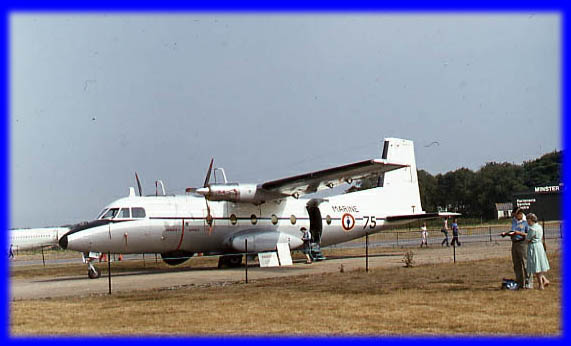 |
The Nord 262 Fregate was a twin turboprop
aircraft, originally developed by the Max Holste company and called
the Super Broussard. But it owed nothing to the original Broussard
design. It is powered by two Turbomeca Bastan turboprops. It can
take up to 29 people for 630 miles at 250mph. It was widely used by
the French armed forces, with a few being exported to a variety of
countries around the world. This French
Navy example was at Bournemouth in August 1984. |
|
Germany /
France |
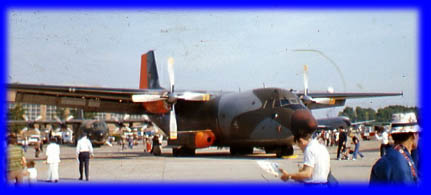 |
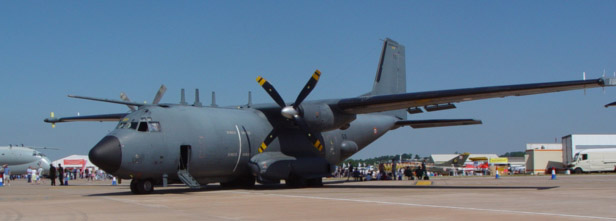 |
|
The Transall C160 was developed by Germany
and France, effectively as a replacement for the Nord Noratlas.
Transall is short for Transport Alliance. With a load capacity of 16
tons, it is quite a capable transport. Its two Rolls-Royce Tyne
turboprops (same as the Vanguard and Belfast) give it a top speed of
333mph and range of up to 2,800 miles depending on payload. It first
flew in February 1963 and is mainly used by the French and German
air forces. Top - German example seen
at Greenham Common in June 1977. Bottom
- C-160G Gabriel, French air force electronic surveillance version,
at Fairford in July 2005 |
| Germany |
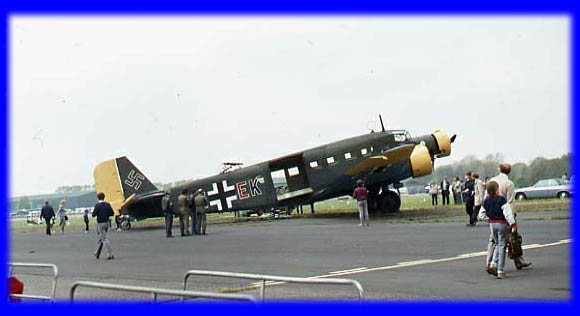 |
|
The Junkers Ju52 (`Iron Annie' or `Tante Ju')
was Germany's main transport during the second world war: more or
less the German equivalent of the C-47. It is powered by three BMW
radial engines, giving it good performance if one engine failed.
Notable features include a corrugated metal skin, typical of Junkers
aircraft of the period. It was converted to many other roles, most
notably for dropping paratroops. Since its first flight in 1932 (a
single engined forerunner had flown in 1930), over 3,500 were built,
including some under license in Spain.
This one was at Biggin Hill in May 1984. |
|
Russia |
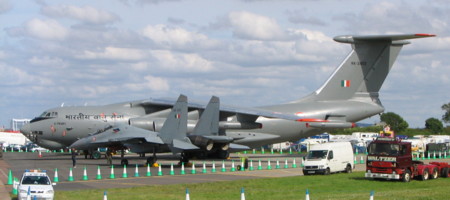 |
|
The Ilyushin Il-78 (`Candid') is an updated
development of the earlier, highly successful Il-76, which first
flew in 1971. The original was conceived as a counterpart to the
American Lockheed Starlifter. Designed by the bureau of Sergei
Ilyushin, it was highly successful, with almost 1,000 being built.
The Il-78 variant pictured here is primarily an in-flight refuelling
tanker. Its four 26,500lb thrust Soloviev D-30 turbofans give it a
very useful 50 ton payload. It is quite a large machine, 152'10"
long, with a wing span of 165'8". Most notable is the very high tail
- it stands over 48 feet tall. The characteristic hump backed
appearance allows the main spar to pass above the cargo hold, giving
outstanding unobstructed cargo space. Maximum cruising speed is
560mph, and it has a range of 2,500 miles.
This Indian Air Force example was at Fairford in
July 2007. |
|
Spain |
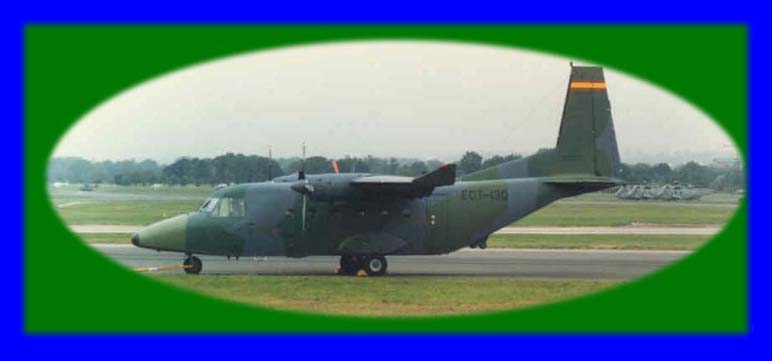 |
|
The CASA 212 Aviocar is a light military
freighter built by Construcciones Aeronauticas SA (CASA), Spain's
main aircraft producer. It first flew in March 1971. Its main
purpose is to replace the Ju52 in the Spanish Air Force, but it also
has attracted a number of export customers. It can carry up to 21
troops or ten stretchers plus attendants. It can fly for 1,300 miles
at 230mph. This one, fitted with
winglets to reduce drag and improve range, was at Farnborough in
1986. |
|
Spain /
Indonesia |
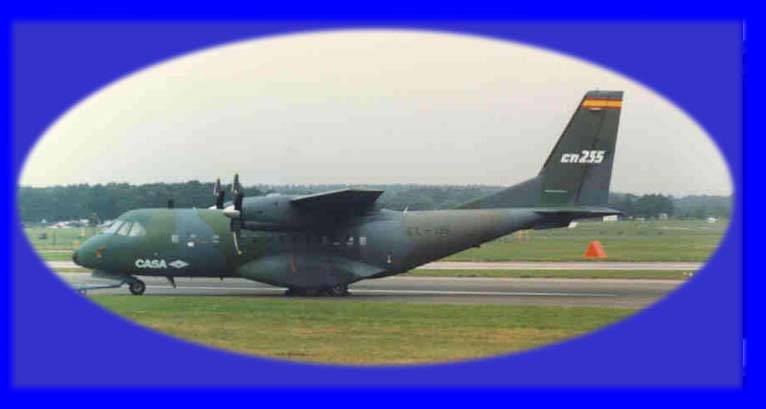 |
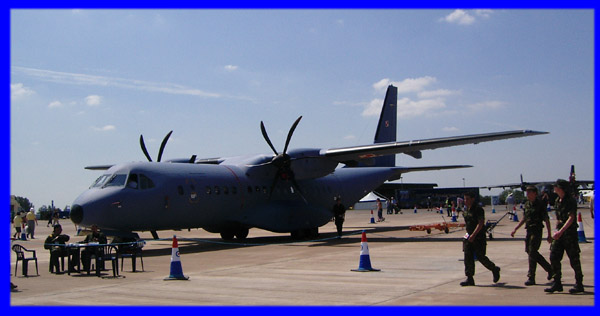 |
|
The CASA / IPTN CN235 was a joint venture
between the Spanish CASA and the Indonesian national aircraft
company, Industri Pesawat Terbang Nusantara (IPTN). It is a 44
passenger aircraft intended for both military and civil operations.
First flight was in November 1983. It is powered by two General
Electric CT7 turboprops, giving it a cruising speed of 280mph and
range of up to 2,100 miles (depending on payload).
The top one was at Farnborough in 1986. The lower
one is a stretched and updated CN295, operated by the Polish air
force, pictured at Fairford in July 2005. |
|
Ukraine |
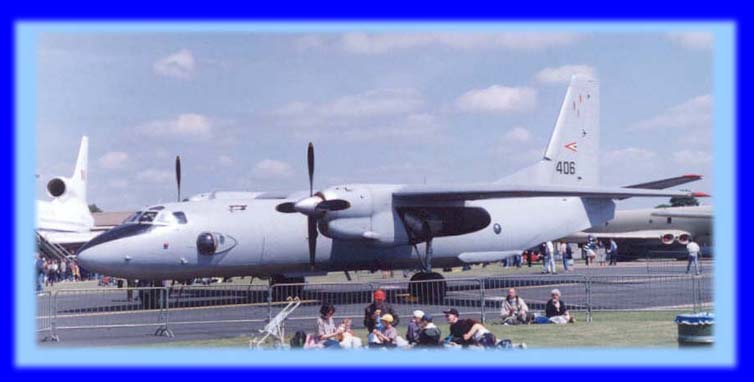
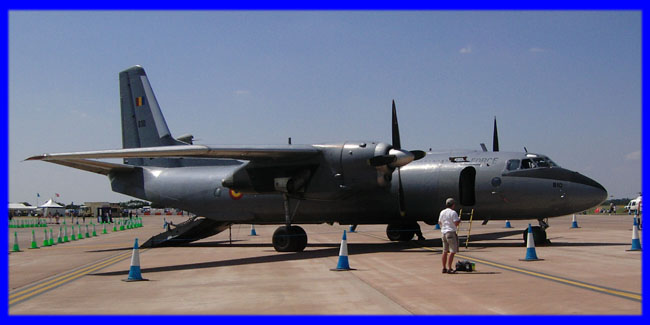 |
|
The Antonov An26 (NATO codename Curl) was an
upgrade of the earlier An24 (`Coke') with more powerful Ivchenko
IV24 turboprops and a rear loading ramp. It is the standard medium
transport of the former Soviet Union and its former satellite
countries. Maximum payload is five and a half tons. It first flew in
the late 1960s. The top picture was
taken at Mildenhall in 1997. The lower picture, showing a Romanian
Air Force example, was at Fairford in July 2005. |





|